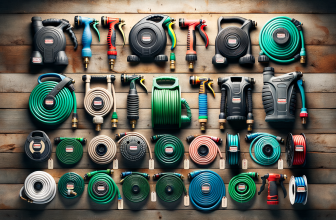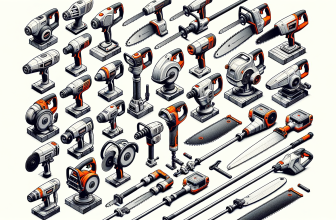
Are you keen on keeping track of rainfall but unsure which rain gauge is the best for your needs? Whether you’re a gardening enthusiast, a meteorology aficionado, or simply someone who likes to keep an eye on the weather, a reliable rain gauge can be a valuable tool. But with numerous options on the market, distinguishing the best from the rest can be a daunting task. In this detailed review, we’ve saved you the trouble and researched extensively to present you with our top picks for the best rain gauges available today.
Our Top Picks
Our #1 Top Pick: Stratus Precision Rain Gauge
The Stratus Precision Rain Gauge stands out as an industry standard among weather enthusiasts. Designed with heavy-duty polycarbonate, this gauge can withstand the harshest weather conditions without fading or cracking. It features a cylindrical shape to minimize splashes, and its precision is spot-on, capable of measuring rain to a hundredth of an inch. Thanks to its clear markings, reading the accumulation is a breeze, making it ideal not only for personal use but also for professional meteorological studies. A mounting bracket is included for easy installation, ensuring that you can start tracking rainfall in no time.
Pick #2: AcuRite Wireless Rain Gauge
If you love tech and want a more modern touch to measuring rain, the AcuRite Wireless Rain Gauge is your best bet. This device includes a wireless, self-emptying rain collector and a digital display that can be situated indoors. You can assess rainfall totals, as well as check current temperatures, from the comfort of your home. The easy-to-read display shows 24-hour and historical rainfall records, and the flood watch alarm adds an extra layer of usefulness. It’s user-friendly and battery-powered, making it convenient to place wherever you need.
Pick #3: La Crosse Technology Rainfall Gauge
La Crosse Technology’s Rainfall Gauge combines the best of both worlds with its digital display and a classic self-emptying rain cup. Its weatherproof design ensures durability, and the digital display, which can be placed up to 300 feet away from the rain sensor, provides daily and cumulative rainfall totals. Setup is straightforward, allowing for an effortless installation. Plus, the rainfall alarm is a nifty addition for immediate updates about heavy rainfall events, which is particularly useful in areas prone to sudden downpours.
Pick #4: Outback Blue Rain Gauge
The Outback Blue Rain Gauge is designed for simplicity and accuracy, with high-quality, UV-resistant materials that promise longevity. The easy-to-read 5-inch capacity gauge with bold numbers makes measuring rainfall straightforward, even from a distance. Suited for fence or post mounting, it comes with all necessary hardware, including a bonus rain chart for tracking. This gauge is perfect for those who prefer a no-fuss approach but still want reliable performance and clear visibility.
Pick #5: GardenMate Professional Rain Gauge
Last but not least on our list is the GardenMate Professional Rain Gauge. This durable outdoor rain gauge with a dual-scale design allows for measurements in both inches and millimeters. The spike at the bottom makes it a breeze to install directly in the garden soil or lawn, and the simple yet robust design ensures it stands firm against the elements. Its capacity to measure up to 1 inch or 25 mm makes it suitable for most climate zones, and the value for money is hard to beat.
What to Know Before You Buy
- Measurement Accuracy: Accuracy is paramount when choosing a rain gauge. Look for options that provide precise readings to ensure reliable data.
- Durability: Outdoor devices need to be tough enough to withstand all weather conditions. Materials like UV-resistant plastic and polycarbonate are preferred for their longevity.
- Ease of Reading: Gauges should have clear, legible markings that can be read from a distance. Large fonts and bold lines are helpful features.
- Data Collection Feature: Some models offer features such as wireless data transmission to a digital display, allowing for more convenient monitoring.
- Mounting Options: Consider whether you’d like to mount your gauge on a fence, post, or directly in the ground, and look for a suitable design.
Factors to Consider Before Buying
- Installation Location: To get accurate readings, ensure there are no obstructions, such as trees or buildings, that could block rainfall or cause inaccurate measurements.
- Data Logging Capabilities: Serious weather trackers might prefer a rain gauge that logs data over time, allowing for analysis of rainfall patterns.
- Maintenance Needs: Some gauges, particularly those with moving parts, may require more maintenance. Look for a gauge that suits your willingness to manage upkeep.
- Budget: Determine how much you’re willing to spend, as prices can vary from budget-friendly basic models to higher-end devices with extra features.
- Additional Features: Alarms for heavy rainfall, temperature readings, and historical data storage are useful extras that can be handy, depending on your needs.
Why Trust ChooseRight?
We understand how overwhelming it can be to choose the right product amid an ocean of options. That’s why our team at ChooseRight takes pride in our meticulous review process. We have scoured through hundreds of customer reviews, engaged in detailed product analysis, and enlisted feedback from seasoned professionals in the meteorological field. Our mission is to provide you with unbiased, comprehensive information so that you can make an informed decision about the best rain gauge for your requirements.
Finishing Thoughts
Whether for professional meteorological tracking, agriculture, or personal interest, a reliable rain gauge can greatly enhance your understanding of the weather patterns that impact our daily lives. Taking into consideration the accuracy, durability, ease of use, and additional features that suit your specific needs will lead you to the best rain gauge for your situation. By relying on our top picks and buying guide, you’re equipped with the knowledge to select a rain gauge that will deliver precise data and withstand the test of time, all while catering to your budget and preferences.
Frequently Asked Questions
What is a rain gauge?
A rain gauge, also known as a pluviometer or ombrometer, is an instrument used to measure the amount of precipitation (usually in millimeters or inches) that falls in a specific area over a set period of time.
How does a rain gauge work?
Most traditional rain gauges collect precipitation in a cylindrical container, and the amount of liquid is then measured using a ruler or built-in measurement tool. More advanced digital rain gauges can detect and log precipitation electronically.
What are the different types of rain gauges?
The most common types of rain gauges are the standard manual rain gauge, tipping bucket rain gauge, and the wireless or digital rain gauge. Each type varies in complexity and how measurements are recorded and processed.
Where is the best place to install a rain gauge?
A rain gauge should be placed in an open area away from buildings, trees, and other obstructions to ensure accurate measurements. It’s often recommended to set them at a height of about 1.5 meters (5 feet) off the ground.
How often should I empty my rain gauge?
It’s best to empty your rain gauge after each significant rain event or once per day if you’re collecting daily precipitation data. Make sure to record the measurement before emptying the gauge.
Are digital rain gauges more accurate than manual ones?
Digital rain gauges can offer more precise readings and often come with additional features such as the ability to record and track data over time. However, well-maintained manual rain gauges are also quite accurate for general purposes.
Can a rain gauge measure snowfall?
Yes, some rain gauges are designed to measure both liquid precipitation and snowfall. However, snowfall measurements can be more complex, as the snow must melt before measuring the equivalent amount of rain. Special all-weather or heated rain gauges can handle this automatically.
Do I need to calibrate my rain gauge?
Manual rain gauges generally don’t need calibration, but it’s a good idea to periodically check them for accuracy by using a known amount of water. Digital rain gauges may require calibration according to the manufacturer’s instructions.
How do I maintain my rain gauge?
Regular cleaning to remove debris and checking for blockages is essential for accurate measurements. For digital rain gauges, you’ll also need to ensure batteries are replaced as needed and sensors are functioning properly.
Are there any smart rain gauges that can connect to my phone?
Yes, there are smart rain gauges available that connect to your home Wi-Fi network and sync data to your smartphone, allowing you to monitor precipitation in real-time and track historical weather data.
Where can I buy a rain gauge?
Rain gauges can be purchased at most home improvement stores, online retailers, specialty weather instrument suppliers, and sometimes at garden centers.







